Hiring movers should make relocating easier, but the process often comes with challenges. Many people make rushed decisions or overlook important details, which can lead to higher costs, delays, or damaged belongings. Whether you choose full-service movers or a man in van in Bromley, avoiding common mistakes is the best way to ensure a smoother experience. By understanding what goes wrong for others, you can take steps to protect your time, money, and peace of mind.
Choosing the First Company You Find

One of the biggest mistakes is hiring the first moving company that shows up in a search. Convenience feels tempting, especially when you are juggling dozens of tasks. However, movers vary widely in cost, reliability, and service quality. Failing to compare options means you could miss out on better prices or more professional service. Taking time to gather multiple quotes helps you make a smarter choice.
Ignoring Reviews and References
Another common error is overlooking reviews or skipping the step of asking for references. Online feedback provides insight into how a company treats its customers and handles belongings. A mover may seem affordable but might have a pattern of late arrivals or careless handling. Asking for references from past clients ensures you get real information. Ignoring these details can cost more than just money. It can cost peace of mind.
Not Getting a Written Estimate
Verbal estimates may sound convenient, but they can lead to confusion later. Without a written agreement, you have little protection if charges suddenly increase. A professional mover provides a detailed breakdown of costs in writing. This document outlines what is included and what may incur extra fees. Skipping this step is a mistake that leaves you vulnerable to hidden costs and disputes.
Overlooking Insurance Coverage

Many people assume movers automatically cover the full value of their belongings. This assumption is often incorrect. Standard coverage might be limited, leaving you with minimal compensation if items are damaged. Reviewing insurance options ensures your belongings are protected. Even if you trust the movers, accidents happen. Choosing the right coverage provides utmost protection and prevents regret if something goes wrong.
Forgetting to Ask About Extra Fees
Some moving companies add charges for stairs, heavy items, or long carries. Failing to ask about these details up front can lead to unpleasant surprises on moving day. Always clarify what is included in the estimate and what may cost extra. Transparency keeps you in control of the budget. Without this conversation, you may face a final bill that is much higher than expected.
Not Communicating Clearly
Poor communication leads to misunderstandings. Failing to point out fragile items, special requests, or restricted access can create problems on moving day. Movers need accurate information to prepare properly. A clear walkthrough of your home and instructions about priorities can prevent mistakes. Taking time to communicate avoids frustration for both you and the movers.
Failing to Plan Ahead

Waiting until the last minute to book movers is another mistake people often make. Good companies book quickly, especially during busy seasons. Delaying your decision limits your options and may force you to settle for less reliable services. Planning ahead not only secures a reputable mover but also reduces stress as moving day approaches. Early preparation is a unique advantage that pays off.
Underestimating the Value of Professionalism
Some people make the mistake of hiring based solely on the lowest price. While saving money is important, professionalism should never be overlooked. Trained movers bring experience, equipment, and efficiency. They handle belongings carefully and know how to navigate challenges. Choosing the cheapest option without considering professionalism may cost more in the long run through damage or delays. Balancing affordability with quality ensures better results.
Hiring movers should simplify your relocation, but common mistakes often make it harder. Choosing the first company you find, ignoring reviews, or failing to get written estimates are errors that can be avoided. Overlooking insurance, forgetting to ask about extra fees, and booking too late also create problems. Clear communication and valuing professionalism round out the essentials. With awareness and preparation, you can avoid these pitfalls and enjoy a smoother, more secure moving experience.…

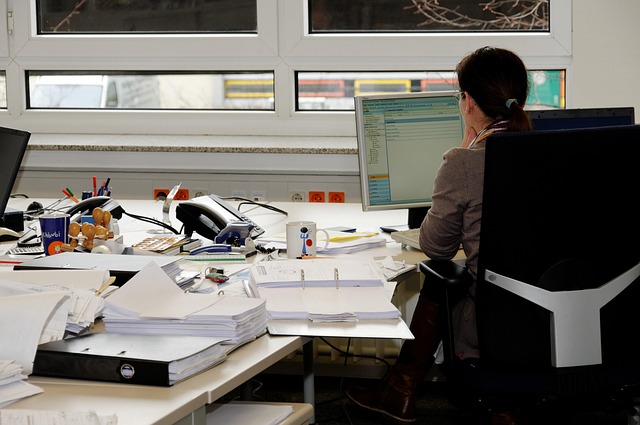
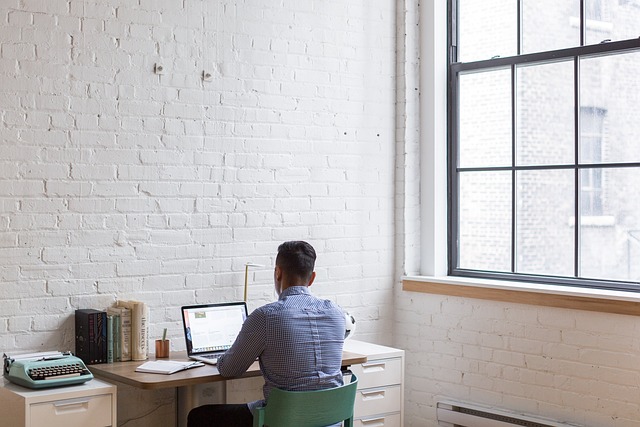
 Owning a dog requires considerable time, effort, and dedication. Dogs are social animals that thrive on companionship and routine. They need daily exercise, mental stimulation, and regular feeding. Depending on the breed, some dogs may require more activity and engagement than others. For instance, high-energy breeds like Border Collies or Labradors need more exercise and mental challenges compared to more laid-back breeds like Bulldogs.
Owning a dog requires considerable time, effort, and dedication. Dogs are social animals that thrive on companionship and routine. They need daily exercise, mental stimulation, and regular feeding. Depending on the breed, some dogs may require more activity and engagement than others. For instance, high-energy breeds like Border Collies or Labradors need more exercise and mental challenges compared to more laid-back breeds like Bulldogs.



 Selecting a suitable
Selecting a suitable 


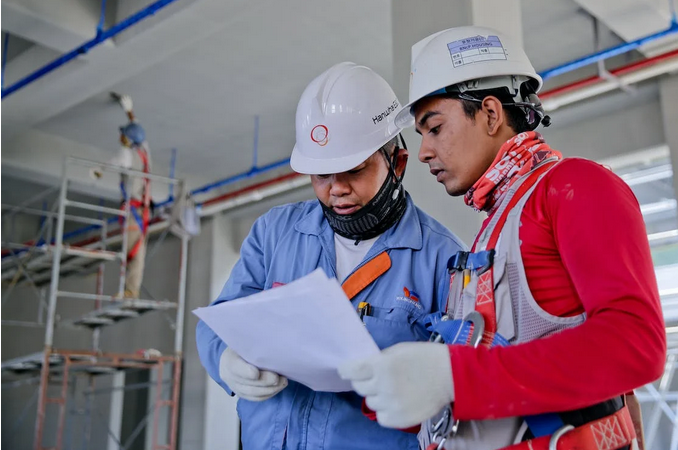

 When you feel like you’re on the verge of an orgasm, use this technique by squeezing your penis. Repeat this as often as you can until you’re prepared to stop. This approach is embraced by certain males. However, you can try the stop-and-start technique if you don’t feel comfortable squeezing your penis. In this instance, by stopping by yourself, you are allowing the orgasmic urge to pass. You can carry on having sex after the orgasm has passed, stopping only when you sense one starting up again. Either of these techniques should help your body become more resilient to fatigue.
When you feel like you’re on the verge of an orgasm, use this technique by squeezing your penis. Repeat this as often as you can until you’re prepared to stop. This approach is embraced by certain males. However, you can try the stop-and-start technique if you don’t feel comfortable squeezing your penis. In this instance, by stopping by yourself, you are allowing the orgasmic urge to pass. You can carry on having sex after the orgasm has passed, stopping only when you sense one starting up again. Either of these techniques should help your body become more resilient to fatigue. The feeling experienced by the penis during sex is lessened by using a condom. This means that you can significantly delay your orgasm. Additionally, you can arouse your partners with condoms. Additionally, it assists in preventing damage and unintended pregnancy for both you and your partner (condoms are 98% effective when used properly). Try out various brands and features to choose which condom will serve you best. You can try having sex with no condom after you get used to the sensation to see if your premature ejaculation has been cured.
The feeling experienced by the penis during sex is lessened by using a condom. This means that you can significantly delay your orgasm. Additionally, you can arouse your partners with condoms. Additionally, it assists in preventing damage and unintended pregnancy for both you and your partner (condoms are 98% effective when used properly). Try out various brands and features to choose which condom will serve you best. You can try having sex with no condom after you get used to the sensation to see if your premature ejaculation has been cured.
 The taste of steak can vary depending on the cut, preparation method, and personal preference. Some people prefer their steak cooked rarely, while others like it well done. No matter how you like your steak cooked, there’s no denying that it has a unique and delicious flavor. One of the things that makes the steak so tasty is its marbling. Marbling refers to the streaks of fat throughout the meat, which add flavor and tenderness. The more marbled a piece of meat is, the more flavorful it will be when cooked. Another factor that affects the taste of steak is seasoning. While some people prefer to keep it simple with just salt and pepper, others choose to use marinades or rubs to enhance the flavor even further. Grilling is usually considered one of the best ways to cook a steak as it allows for caramelization on the outside while keeping all those delicious juices inside. However, other methods, such as broiling or pan-searing, can also result in a mouth-watering meal.
The taste of steak can vary depending on the cut, preparation method, and personal preference. Some people prefer their steak cooked rarely, while others like it well done. No matter how you like your steak cooked, there’s no denying that it has a unique and delicious flavor. One of the things that makes the steak so tasty is its marbling. Marbling refers to the streaks of fat throughout the meat, which add flavor and tenderness. The more marbled a piece of meat is, the more flavorful it will be when cooked. Another factor that affects the taste of steak is seasoning. While some people prefer to keep it simple with just salt and pepper, others choose to use marinades or rubs to enhance the flavor even further. Grilling is usually considered one of the best ways to cook a steak as it allows for caramelization on the outside while keeping all those delicious juices inside. However, other methods, such as broiling or pan-searing, can also result in a mouth-watering meal. Steak is not only delicious, but it also packs a nutritional punch that makes it a great addition to any diet. First and foremost, steak is an excellent source of protein, which helps build and repair muscles in the body. Additionally, steak contains essential amino acids that our bodies cannot produce alone. Apart from protein, steak also provides iron – an important mineral for maintaining healthy blood cells. Iron is crucial in carrying oxygen throughout the body and preventing fatigue and weakness. Moreover, beef contains several B vitamins, such as B12 and niacin, which are vital for energy production, brain function, and DNA synthesis, respectively. These vitamins are necessary for the proper functioning of each cell.
Steak is not only delicious, but it also packs a nutritional punch that makes it a great addition to any diet. First and foremost, steak is an excellent source of protein, which helps build and repair muscles in the body. Additionally, steak contains essential amino acids that our bodies cannot produce alone. Apart from protein, steak also provides iron – an important mineral for maintaining healthy blood cells. Iron is crucial in carrying oxygen throughout the body and preventing fatigue and weakness. Moreover, beef contains several B vitamins, such as B12 and niacin, which are vital for energy production, brain function, and DNA synthesis, respectively. These vitamins are necessary for the proper functioning of each cell. Planning the menu is an essential part of hosting a party that can make or break your guests’ enjoyment. Start by deciding on the type of food you want to serve, consider any dietary restrictions or preferences your guests may have. If you’re unsure, reach out and ask them beforehand.
Planning the menu is an essential part of hosting a party that can make or break your guests’ enjoyment. Start by deciding on the type of food you want to serve, consider any dietary restrictions or preferences your guests may have. If you’re unsure, reach out and ask them beforehand.
 One of the most important benefits of online marketing is the ability to target specific audiences and gain new customers. With different digital advertising methods, you can reach a wide range of potential customers and attract them to your business. It can be done through search engine optimization (SEO), pay-per-click campaigns, or social media platforms like Facebook and Instagram.
One of the most important benefits of online marketing is the ability to target specific audiences and gain new customers. With different digital advertising methods, you can reach a wide range of potential customers and attract them to your business. It can be done through search engine optimization (SEO), pay-per-click campaigns, or social media platforms like Facebook and Instagram.
 Finally, online marketing can save your business money in the long run. By investing in digital advertising methods such as SEO and pay-per-click campaigns, you can reach a wide audience without spending too much on traditional advertising methods like television or radio commercials. It will help to keep your costs down and maximize your budget.
Finally, online marketing can save your business money in the long run. By investing in digital advertising methods such as SEO and pay-per-click campaigns, you can reach a wide audience without spending too much on traditional advertising methods like television or radio commercials. It will help to keep your costs down and maximize your budget.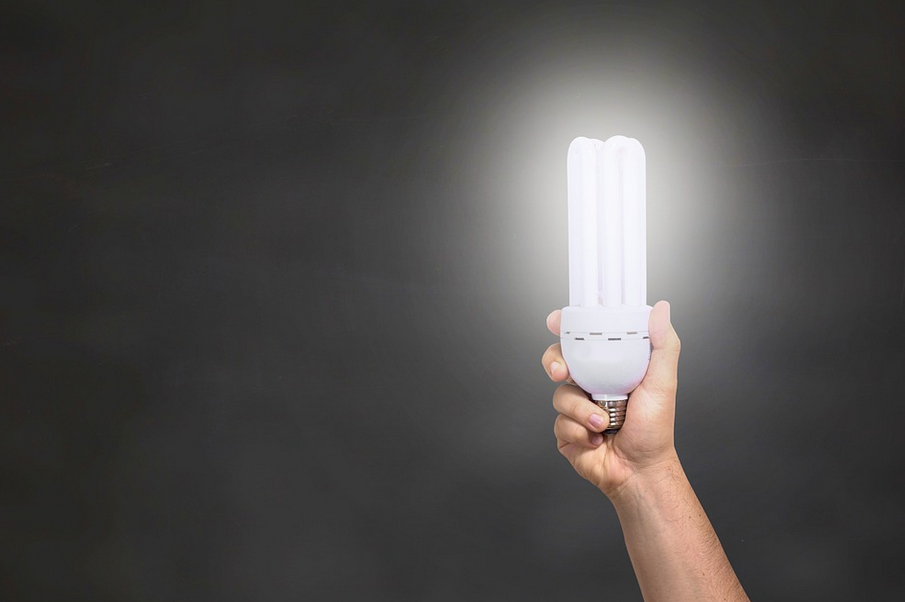
 One of the best signs that you’re a good mom is that your kids feel comfortable telling you everything. Of course, there are some things they’ll keep to themselves (and that’s perfectly normal), but for the most part, if they can come to you with their problems and concerns, it means they trust you. They know you won’t judge them and that you’ll help them however you can. It also means they feel safe with you. They know they can tell you anything without fear of being scolded or punished. This is a precious gift and one that not all kids have.
One of the best signs that you’re a good mom is that your kids feel comfortable telling you everything. Of course, there are some things they’ll keep to themselves (and that’s perfectly normal), but for the most part, if they can come to you with their problems and concerns, it means they trust you. They know you won’t judge them and that you’ll help them however you can. It also means they feel safe with you. They know they can tell you anything without fear of being scolded or punished. This is a precious gift and one that not all kids have. Did you know that you’re a role model for your kids? It’s true. They learn from everything you do, both good and bad. So, if you want them to be good people, you must set a good example. Be kind, patient, and honest – show them what it means to be a good person. If you can do that, then you’re definitely a good mom. Your kids are lucky to have you as their role model.
Did you know that you’re a role model for your kids? It’s true. They learn from everything you do, both good and bad. So, if you want them to be good people, you must set a good example. Be kind, patient, and honest – show them what it means to be a good person. If you can do that, then you’re definitely a good mom. Your kids are lucky to have you as their role model. First off, let’s start with the most common posture mistake. That is hunching over your computer screen. This puts a lot of strain on your neck and back, and it can lead to pain in those areas. If you find yourself doing this, make sure to sit up straight and keep your shoulders back. It might help to adjust your chair so that it’s at the right height. It would help if you also tried to take breaks from sitting in the same position for too long. Get up and walk around every 20 minutes or so.
First off, let’s start with the most common posture mistake. That is hunching over your computer screen. This puts a lot of strain on your neck and back, and it can lead to pain in those areas. If you find yourself doing this, make sure to sit up straight and keep your shoulders back. It might help to adjust your chair so that it’s at the right height. It would help if you also tried to take breaks from sitting in the same position for too long. Get up and walk around every 20 minutes or so. Adjusting your chair is one thing, but you also need to make sure that your workstation is set up ergonomically. It means that everything should be within easy reach, and you shouldn’t have to strain your body to reach something. For example, if you’re constantly reaching for your mouse, it’s probably not in the right spot. Please take a few minutes to adjust your workstation so that it’s comfortable for you. You’ll be surprised at how much this can help with your posture. The rule of thumb is that you should be able to sit up straight and not have to hunch over to reach anything,
Adjusting your chair is one thing, but you also need to make sure that your workstation is set up ergonomically. It means that everything should be within easy reach, and you shouldn’t have to strain your body to reach something. For example, if you’re constantly reaching for your mouse, it’s probably not in the right spot. Please take a few minutes to adjust your workstation so that it’s comfortable for you. You’ll be surprised at how much this can help with your posture. The rule of thumb is that you should be able to sit up straight and not have to hunch over to reach anything, I know this mistake is more common among women, but men can be guilty of it too. Carrying a heavy bag or purse on one shoulder can cause muscle imbalances and lead to pain in the shoulders and neck. If you have to carry a heavy bag, make sure to distribute the weight by using both straps evenly. And if you’re taking a purse, try to switch it to the other shoulder now and then.
I know this mistake is more common among women, but men can be guilty of it too. Carrying a heavy bag or purse on one shoulder can cause muscle imbalances and lead to pain in the shoulders and neck. If you have to carry a heavy bag, make sure to distribute the weight by using both straps evenly. And if you’re taking a purse, try to switch it to the other shoulder now and then. Another reason chattel loans are essential to credit unions is that they fill the gap in the mortgage market. It is because many borrowers who do not qualify for a traditional mortgage may still be able to be eligible for a chattel loan. This allows credit unions to serve a more significant segment of the population. Chattel loans also offer several benefits to borrowers. For example, these loans typically have lower interest rates than other loans and have shorter terms. As a result, borrowers can save money on interest payments and pay off their loans faster.
Another reason chattel loans are essential to credit unions is that they fill the gap in the mortgage market. It is because many borrowers who do not qualify for a traditional mortgage may still be able to be eligible for a chattel loan. This allows credit unions to serve a more significant segment of the population. Chattel loans also offer several benefits to borrowers. For example, these loans typically have lower interest rates than other loans and have shorter terms. As a result, borrowers can save money on interest payments and pay off their loans faster. Finally, chattel loans are essential to credit unions because they are a source of revenue. This is because the interest rates on these loans are typically higher than the rates on other loans. As a result, credit unions can earn more money by offering this type of loan to their members. The fees associated with chattel loans can also provide a source of revenue for credit unions. Chattel loans are essential to credit unions because they allow them to expand their product offerings and better serve their members.
Finally, chattel loans are essential to credit unions because they are a source of revenue. This is because the interest rates on these loans are typically higher than the rates on other loans. As a result, credit unions can earn more money by offering this type of loan to their members. The fees associated with chattel loans can also provide a source of revenue for credit unions. Chattel loans are essential to credit unions because they allow them to expand their product offerings and better serve their members. Asking for referrals is one of the most acceptable methods to locate a paving contractor you can trust. Check with friends, family, and neighbors who have recently had work done to see if they have any recommendations. After you’ve compiled a list of possible prospects, do some web research on each one. Examine their website, read client testimonials, and see what others say about their services. This will assist you in narrowing down your selections and locating the most suitable paving contractor for your requirements.
Asking for referrals is one of the most acceptable methods to locate a paving contractor you can trust. Check with friends, family, and neighbors who have recently had work done to see if they have any recommendations. After you’ve compiled a list of possible prospects, do some web research on each one. Examine their website, read client testimonials, and see what others say about their services. This will assist you in narrowing down your selections and locating the most suitable paving contractor for your requirements. The first step in finding a reputable paving contractor requires a contract. This will protect you and your home if something goes wrong with the project. Make sure that the contract includes a clause that states that the contractor will be responsible for any damage they cause to your property. Additionally, the contract should consist of a payment schedule and a detailed description of the work completed.
The first step in finding a reputable paving contractor requires a contract. This will protect you and your home if something goes wrong with the project. Make sure that the contract includes a clause that states that the contractor will be responsible for any damage they cause to your property. Additionally, the contract should consist of a payment schedule and a detailed description of the work completed. Rising superstars and many professional athletes like to spend their hard-earned money extravagantly, which sometimes can make them end up being indebted. The golden rule is simple if you can’t afford it twice, then don’t buy it. While some people might find this rule too conservative and restrictive, there’s a reason why many successful athletes swear by this motto. This kind of mindset will help you manage your finances better in the long run; with enough discipline, self-control, and hard work, you’ll get to enjoy the finer things in life without going into debt.
Rising superstars and many professional athletes like to spend their hard-earned money extravagantly, which sometimes can make them end up being indebted. The golden rule is simple if you can’t afford it twice, then don’t buy it. While some people might find this rule too conservative and restrictive, there’s a reason why many successful athletes swear by this motto. This kind of mindset will help you manage your finances better in the long run; with enough discipline, self-control, and hard work, you’ll get to enjoy the finer things in life without going into debt. The key to managing your finances wisely as professional athletes are investing, and the earlier you start, the better off you will be. There are many different options for investment, such as stocks, real estate, and mutual funds. It is important not to put all of your eggs in one basket when it comes to investing because if something goes wrong with the company or market where you invested your money, you could lose everything that was invested there.
The key to managing your finances wisely as professional athletes are investing, and the earlier you start, the better off you will be. There are many different options for investment, such as stocks, real estate, and mutual funds. It is important not to put all of your eggs in one basket when it comes to investing because if something goes wrong with the company or market where you invested your money, you could lose everything that was invested there.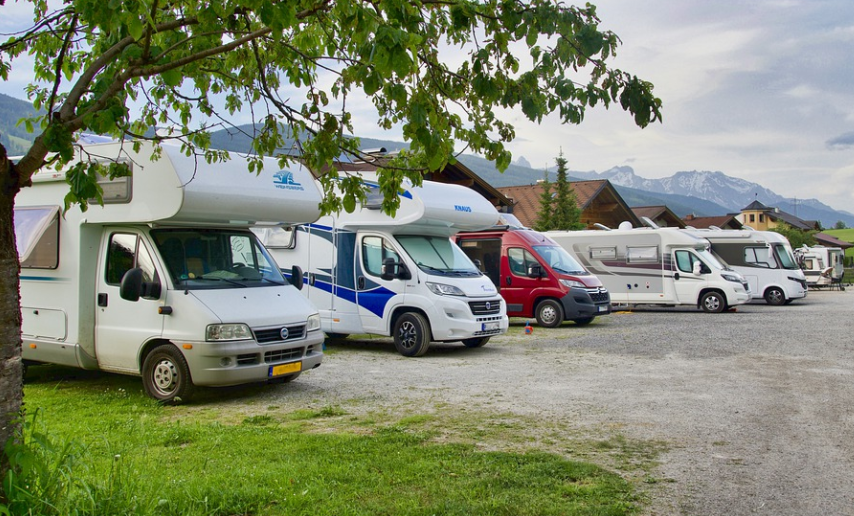

 This sleek and compact device is a modern necessity. It is a phone, mp3 player, media player, web browser and GPS all in one. With one of these devices, you get 5 gadgets. The initial and running cost of an iPhone may seem high, but it’s worth it when you add up the savings of multiple devices. You can wait for Apple fanboi to slowly buy their iPhone to get it. That way, you’ll be aware of any bugs or software updates.
This sleek and compact device is a modern necessity. It is a phone, mp3 player, media player, web browser and GPS all in one. With one of these devices, you get 5 gadgets. The initial and running cost of an iPhone may seem high, but it’s worth it when you add up the savings of multiple devices. You can wait for Apple fanboi to slowly buy their iPhone to get it. That way, you’ll be aware of any bugs or software updates. HDTV is the future of television. Please tell me where you’re hiding. HDTV will be the future of broadcasting. HDTV technology will be the norm and all broadcasters will offer HDTV within a few years.
HDTV is the future of television. Please tell me where you’re hiding. HDTV will be the future of broadcasting. HDTV technology will be the norm and all broadcasters will offer HDTV within a few years.  We know your iPhone has GPS, but it’s still in beta. The ability to use a standalone GPS for city living is critical. It will make it easy to move from one gadget display to another with minimal effort. 3D GPS will make it easier than ever to get to your favorite places. Our favorite GPS at the moment is the Knight Rider GPS. It is voiced and narrated by William Daniels, the actor from the original KITT.
We know your iPhone has GPS, but it’s still in beta. The ability to use a standalone GPS for city living is critical. It will make it easy to move from one gadget display to another with minimal effort. 3D GPS will make it easier than ever to get to your favorite places. Our favorite GPS at the moment is the Knight Rider GPS. It is voiced and narrated by William Daniels, the actor from the original KITT.  Disability cover is rather modest in comparison with gainful employment and is very bad for individual growth, I do not think that it ought to be compensated oftentimes, just in certain, and it needs to be restricted so that folks do not take whole advantage of it. Unfortunately, discrimination is just another thing, it is not fair, exactly like the man who buys a quick bike and pushes it 140 miles down the street, crashes, and can be geared toward a lifetime.
Disability cover is rather modest in comparison with gainful employment and is very bad for individual growth, I do not think that it ought to be compensated oftentimes, just in certain, and it needs to be restricted so that folks do not take whole advantage of it. Unfortunately, discrimination is just another thing, it is not fair, exactly like the man who buys a quick bike and pushes it 140 miles down the street, crashes, and can be geared toward a lifetime. If you stick to the legislation, but won’t help anybody, then why bother using all the front page. This is a concept blended in with some prior suggestions and discussions. In regards to OUR eyesight of mending the entire world is it not up to it to our team to make this planet more clear? Our work along with the ADA and the way this should be integrated into other classes for motives.
If you stick to the legislation, but won’t help anybody, then why bother using all the front page. This is a concept blended in with some prior suggestions and discussions. In regards to OUR eyesight of mending the entire world is it not up to it to our team to make this planet more clear? Our work along with the ADA and the way this should be integrated into other classes for motives. The legal basis for the “right of the people to keep and bear arms” is based on the Second Amendment. While state and local governments regulate whether taxpayers can carry firearms on people, for example, laws governing who can obtain or own guns are enacted at the federal level. The ATF (Bureau of Alcohol, Tobacco, Firearms, and Explosives), a division under the Department of Justice, administers the GCA and regulates the standards for issuing licenses to gun vendors.
The legal basis for the “right of the people to keep and bear arms” is based on the Second Amendment. While state and local governments regulate whether taxpayers can carry firearms on people, for example, laws governing who can obtain or own guns are enacted at the federal level. The ATF (Bureau of Alcohol, Tobacco, Firearms, and Explosives), a division under the Department of Justice, administers the GCA and regulates the standards for issuing licenses to gun vendors. Like gun owners, sellers interested in obtaining an FFL (Federal Firearms License) (FFL) should be at least 21 years of age. They must have prerequisites to conduct the business and must notify a local law enforcement officer at the time they submit their applications to the federal agency that regulates guns. Like gun owners, they must meet the same standards regarding their criminal record and mental state.
Like gun owners, sellers interested in obtaining an FFL (Federal Firearms License) (FFL) should be at least 21 years of age. They must have prerequisites to conduct the business and must notify a local law enforcement officer at the time they submit their applications to the federal agency that regulates guns. Like gun owners, they must meet the same standards regarding their criminal record and mental state. The handset is a bit like a telephone handset that uses an antenna. Radio sizes can vary depending on the characteristics of the item. Typically, accredited goods are used for industrial purposes to support security and consistency. Construction sites, shopping malls, outdoor warehouses, and warehouses need the advantage of walkie-talkies to communicate with each other. A wireless walkie-talkie is the best option to stay connected when a given company is spread over long distances.
The handset is a bit like a telephone handset that uses an antenna. Radio sizes can vary depending on the characteristics of the item. Typically, accredited goods are used for industrial purposes to support security and consistency. Construction sites, shopping malls, outdoor warehouses, and warehouses need the advantage of walkie-talkies to communicate with each other. A wireless walkie-talkie is the best option to stay connected when a given company is spread over long distances. A wireless radio application is not difficult to set up and configure while being affordable. If your farm or business covers a huge place, then make sure you choose the product that uses an excellent selection. Usually, wireless radios need ways to utilize the frequencies available in the area. Take the necessary steps to confirm security. You can record program codes to limit the transmission of signals in your system. Also, only radio frequencies with the correct coding should enter your system. Also, you can use individual frequencies to capture your entire device or location instantly.
A wireless radio application is not difficult to set up and configure while being affordable. If your farm or business covers a huge place, then make sure you choose the product that uses an excellent selection. Usually, wireless radios need ways to utilize the frequencies available in the area. Take the necessary steps to confirm security. You can record program codes to limit the transmission of signals in your system. Also, only radio frequencies with the correct coding should enter your system. Also, you can use individual frequencies to capture your entire device or location instantly.
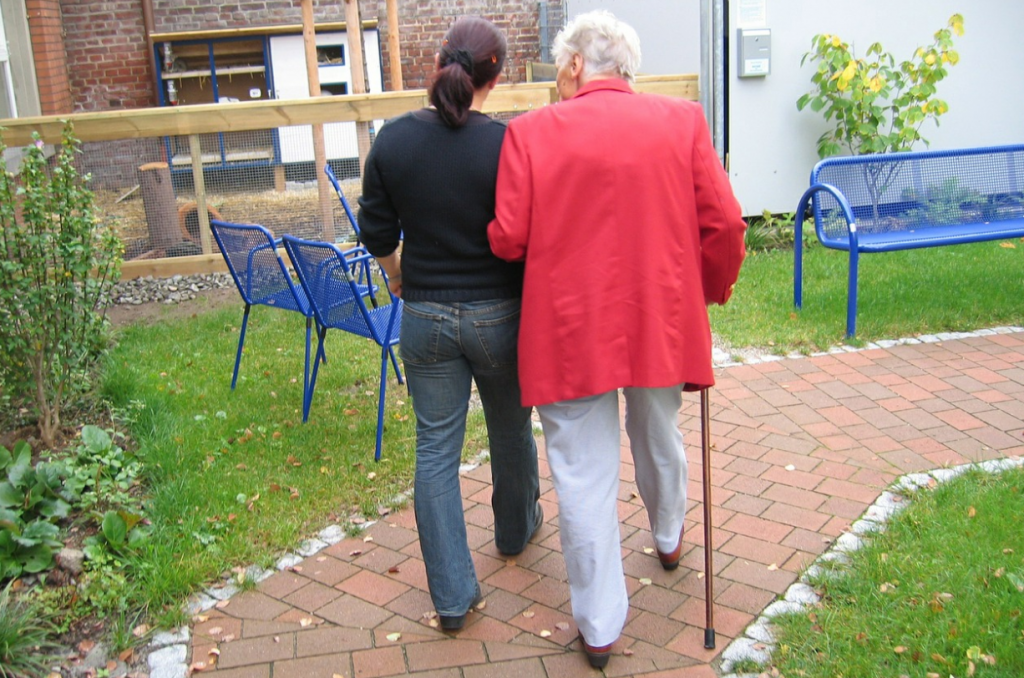
 If you are a newcomer to the online gambling region, try to make wise decisions and you will likely benefit from your investment fund. Who knows. You’ll make some money, too. One of the main “approaches” to gambling, both offline and online, is to stick to games where the advantage of playing at home is less. Baccarat is not as well known as other games, but it also has a low edge and is much easier to understand than you might think.
If you are a newcomer to the online gambling region, try to make wise decisions and you will likely benefit from your investment fund. Who knows. You’ll make some money, too. One of the main “approaches” to gambling, both offline and online, is to stick to games where the advantage of playing at home is less. Baccarat is not as well known as other games, but it also has a low edge and is much easier to understand than you might think. Funding your online betting is a problem working with a credit card or even setting up a prepaid “e-wallet” on a website to use. You risk spending more money when you sign up with a credit card. If the e-wallet is empty, you can’t gamble until you fill it out. Know your games, pay attention to your budget, and protect yourself from reckless gambling. You will have much more fun with online gambling.…
Funding your online betting is a problem working with a credit card or even setting up a prepaid “e-wallet” on a website to use. You risk spending more money when you sign up with a credit card. If the e-wallet is empty, you can’t gamble until you fill it out. Know your games, pay attention to your budget, and protect yourself from reckless gambling. You will have much more fun with online gambling.…
 I hope a complaint about
I hope a complaint about  GPC has become a trendy gaming platform, and online is on board, so the consoles want to compete with the PC. The budget for making video games has increased much more than the inflation rate. The price of games has improved much less than the inflation rate, which means that developing a game is more expensive, but buying a game is relatively cheaper. DLC is often used to fill this gap, and I think that a paid online service is a much better option for, for example, looting boxes.
GPC has become a trendy gaming platform, and online is on board, so the consoles want to compete with the PC. The budget for making video games has increased much more than the inflation rate. The price of games has improved much less than the inflation rate, which means that developing a game is more expensive, but buying a game is relatively cheaper. DLC is often used to fill this gap, and I think that a paid online service is a much better option for, for example, looting boxes. Be certain you and your marketing employees have obviously identified and determined the perception and the aim of your business or brand. You might indeed create sub-goals that you necessitate to achieve by employing this tactic. Some of the purposes could be expanding traffic, developing SEO scores, increasing subscriber calculation, producing product verification, etc.
Be certain you and your marketing employees have obviously identified and determined the perception and the aim of your business or brand. You might indeed create sub-goals that you necessitate to achieve by employing this tactic. Some of the purposes could be expanding traffic, developing SEO scores, increasing subscriber calculation, producing product verification, etc.
 If your company retains real estate, an LLC could be the better option at tax
If your company retains real estate, an LLC could be the better option at tax  Each nation’s LLC laws change marginally, so if your company functions in many distinct nations, you want to understand that country’s regulations for LLCs. Corporate legislation is endless, which makes it much easier for lawyers to defend a customer that’s incorporated. LLC laws are much less prevalent, which makes it more challenging for attorneys. In most states, once the proprietor of an LLC expires, the LLC ends too. In a company, the company entity proceeds until it formally dissolved.
Each nation’s LLC laws change marginally, so if your company functions in many distinct nations, you want to understand that country’s regulations for LLCs. Corporate legislation is endless, which makes it much easier for lawyers to defend a customer that’s incorporated. LLC laws are much less prevalent, which makes it more challenging for attorneys. In most states, once the proprietor of an LLC expires, the LLC ends too. In a company, the company entity proceeds until it formally dissolved. In the early weeks after a puppy is born, you may be able to find a relative and understand the person who cares for it, although it is still too early to enter your consciousness at this level. Within the next week or so, your puppy will begin to develop a sense of behavior. Play, curiosity, and mining begin to play a role in developing the animal and understanding its identity as part of its loved ones.
In the early weeks after a puppy is born, you may be able to find a relative and understand the person who cares for it, although it is still too early to enter your consciousness at this level. Within the next week or so, your puppy will begin to develop a sense of behavior. Play, curiosity, and mining begin to play a role in developing the animal and understanding its identity as part of its loved ones. Trust is essential for a healthy puppy, and this process should begin when he is young. Work to increase your puppy’s confidence by attracting his attention and statements. Don’t always take on the coach’s role, but give your puppy time to play with him and let him appreciate your small business. As long as your pet is kept in the sense that he is a friend inside you, the teaching process will be easier and more effective.…
Trust is essential for a healthy puppy, and this process should begin when he is young. Work to increase your puppy’s confidence by attracting his attention and statements. Don’t always take on the coach’s role, but give your puppy time to play with him and let him appreciate your small business. As long as your pet is kept in the sense that he is a friend inside you, the teaching process will be easier and more effective.…